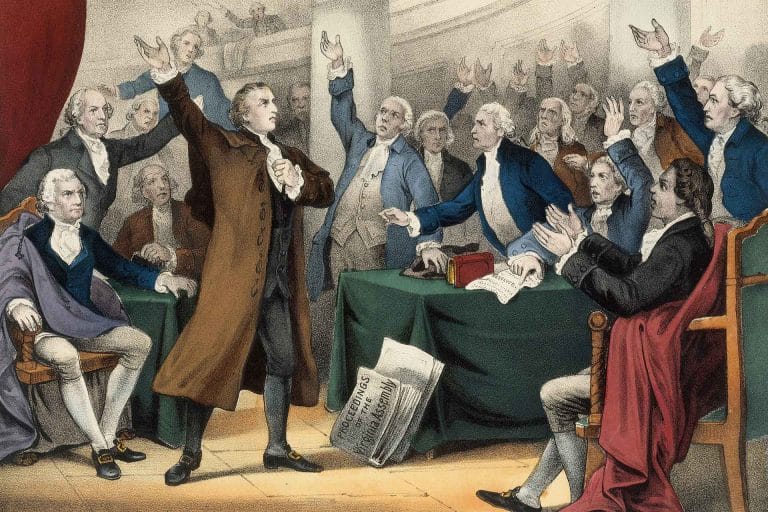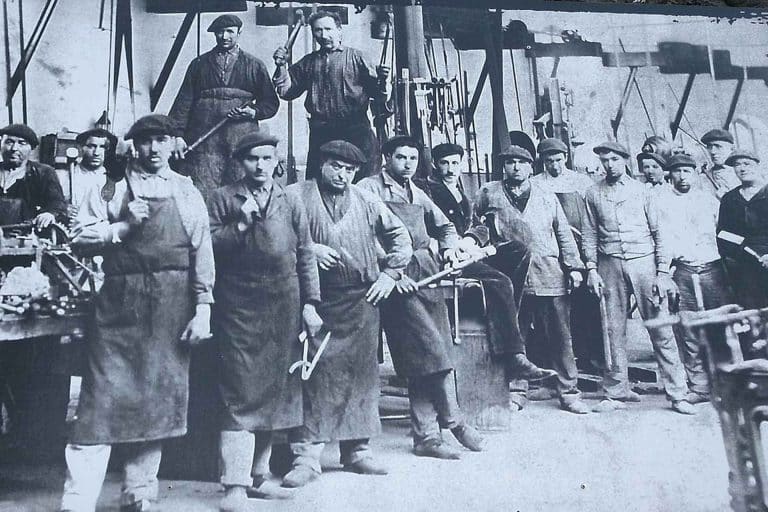Black Flags and Jolly Rogers: 8 Icons of the Caribbean’s Golden Age of Piracy
The Caribbean was teeming with notorious pirates during the so-called “Golden Age of Piracy” in the late 17th to early 18th centuries. Many of these figures have since been immortalized in literature, film, and popular culture. This article will discuss eight of the most notorious pirates operating in the Caribbean during the Golden Age of Piracy.

Henry Morgan
Henry Morgan, born around 1635 in Wales, stands out as one of the most renowned pirates in history, though interestingly, he might never have referred to himself as one. Instead, he often held the titles of privateer or buccaneer, working on behalf of the English crown. Born to a farming family, young Morgan set out to sea at an early age, drawn to the promise of wealth and adventure. He began his maritime career as a privateer during the Anglo-Spanish War, effectively giving him a license to raid and plunder Spanish ships and settlements.
Morgan’s tales of exploits are the stuff of legends. Among his most audacious endeavors was the 1668 attack on Portobelo, a wealthy Spanish stronghold. Using cunning and sheer audacity, Morgan and his crew captured the fort, looted its treasures, and held it for ransom. His tactics often leaned more towards strategy and psychological warfare than outright force. In one account, he had religious friars and nuns carry ladders to the front lines for his men, banking on the notion that the Spanish defenders would be hesitant to fire upon them. Morgan’s cunning and audacity in these attacks made him both a feared enemy and a revered hero among the English.

“Buccaneers and Marooners of the Spanish Main”. Harper’s Magazine / Wikipedia Commons / Public Domain
The Caribbean Sea, with its countless islands and rich Spanish settlements, was Morgan’s primary playground. He achieved immense success in his ventures, more so than most of his contemporaries. His 1671 raid on Panama City, despite being a strategic blunder that led to the city’s burning, resulted in a considerable haul of treasures. This operation, however, would also become his undoing, as it violated a peace treaty between England and Spain.
As for his demise, after his raid on Panama City, Morgan was arrested and sent back to England. However, instead of facing punishment, he found himself celebrated as a hero. He was knighted by King Charles II and returned to Jamaica, this time as its Lieutenant Governor. In a twist fit for a novel, the notorious pirate had become a respected colonial official. He lived out the rest of his days on the island, passing away in 1688.
In terms of cultural significance, Captain Henry Morgan’s life has inspired countless tales, novels, and films. His transformation from a pirate to a knight and then a colonial official showcases the blurred lines between piracy and legitimate naval warfare during his era. Modern audiences might recognize his name from the famous spiced rum brand, “Captain Morgan,” with its iconic label featuring a pirate with one leg propped up, a clear nod to the legendary buccaneer’s adventurous spirit.

Stede Bonnet: The Gentleman Pirate of the Caribbean
Born into a life of privilege in 1688 in Barbados, Stede Bonnet defies the stereotypical image of a pirate. Hailing from a wealthy English family, Bonnet enjoyed a comfortable existence, owning an estate and bearing the title of a major in the military. However, amidst personal issues and a series of misfortunes, including conflicts with his wife, Bonnet made the abrupt and surprising decision to turn to piracy. It was an unusual choice, especially given that he had no maritime experience. Instead of recruiting a crew in the traditional manner, he used his own funds to purchase a sloop named “Revenge” and paid his sailors wages, a move unconventional for pirate captains.
Bonnet’s piratical career was full of curious incidents. He began by attacking merchant ships near Virginia and the Carolinas, capturing and burning vessels. Yet, his lack of naval knowledge became apparent, leading to several misadventures. On one occasion, his ship was severely damaged in a storm because he didn’t know how to navigate through it. In another peculiar episode, Bonnet would reportedly read aloud from books to his crew, a habit not often associated with pirates.

Operating primarily off the Eastern Seaboard of America, from New York to the Carolinas, Bonnet’s successes were a mix of triumphs and blunders. His most significant achievement was the capture of the “Protestant Caesar,” a merchant ship laden with valuable goods. However, his lack of maritime skills led him to form an alliance with the infamous Blackbeard (Edward Teach). The pair engaged in several raids together, but the partnership was short-lived, as Blackbeard took advantage of Bonnet, commandeering his ship and marooning him on an island.
The end for Stede Bonnet came in 1718 when he was captured near the Cape Fear River by Colonel William Rhett. Bonnet was tried, found guilty of piracy, and subsequently hanged in Charleston, South Carolina. His transition from a life of luxury to his tragic end as a pirate has made him a unique and intriguing figure in the annals of piracy.
In the realm of cultural significance, Stede Bonnet’s story is particularly fascinating because he chose piracy not out of necessity or desire for wealth but seemingly as an escape from his personal problems. This has made him a subject of interest for historians and authors alike. While he might not have the broad recognition of pirates like Blackbeard or Calico Jack in pop culture, Bonnet’s tale has been recounted in several books and documentaries, emphasizing the unpredictability and vast array of characters that populated the “Golden Age of Piracy.”


Calico Jack: The Flamboyant Pirate of the Caribbean
Jack Rackham, more infamously known as “Calico Jack” due to his penchant for colorful calico clothing, was born around 1682, though much of his early life remains shrouded in mystery. What is certain is that by the early 18th century, he had taken to the seas, initially serving as a quartermaster on the pirate ship captained by Charles Vane. When Vane showed cowardice during an encounter with a French warship, Rackham led a mutiny, taking command of the vessel. From that moment, Calico Jack’s life as a full-fledged pirate captain had begun.
Under Rackham’s leadership, the crew adopted a new pirate flag: a skull with crossed swords, a design that would later become synonymous with the Golden Age of Piracy. Calico Jack, known for his audacity, carried out brazen attacks on smaller vessels near the shores of Jamaica and the Bahamas. It was during these escapades that he came across Anne Bonny, the spirited daughter of a plantation owner. Their fates intertwined, and she, disguising herself as a man, became part of his crew, later joined by another female pirate, Mary Read.

Pablo Rocket, CC BY-SA 3.0 https://creativecommons.org/licenses/by-sa/3.0, via Wikimedia Commons
Rackham’s exploits took him across the waters of the Caribbean, particularly around the Bahamas, Cuba, and Florida. While he didn’t amass treasures comparable to some of his contemporaries, his daring tactics, flamboyant style, and association with two of history’s most famous female pirates made him particularly noteworthy. Rackham’s audaciousness was, at times, his downfall. Unlike other pirates who preferred the cover of darkness, he was known to attack in broad daylight, a trait that often brought him into confrontation with well-armed merchant ships.

Calico Jack’s pirate career was as short-lived as it was colorful. Captured in 1720 by pirate hunter Captain Jonathan Barnet while his crew was inebriated, Rackham was tried and sentenced to hang for his crimes. Before his execution in Port Royal, Jamaica, it’s said that Anne Bonny visited him, not to comfort but to chide him, allegedly remarking, “Had you fought like a man, you need not have been hanged like a dog.”
Calico Jack’s legacy in popular culture is vast. His flag, the skull and crossed swords, has become one of the most recognizable symbols of piracy. His relationships with Anne Bonny and Mary Read, unique for the time, have been romanticized and retold in numerous books, films, and TV series. He features prominently in media like the TV series “Black Sails” and the video game “Assassin’s Creed IV: Black Flag.” Even centuries after his death, Calico Jack’s story continues to inspire, a testament to the allure of the pirate’s rebellious life on the high seas.

Anne Bonny: The Fiery Female Pirate of the Caribbean
Born in Ireland around 1700, Anne Bonny’s life was destined for controversy from the very start. She was the illegitimate daughter of lawyer William Cormac and his housemaid. Her father’s affair and the birth of Anne caused a scandal, prompting the family to relocate to the New World, settling in Charleston, South Carolina. Growing up, Anne was known for her fierce temper; according to one legend, she even stabbed a servant girl with a knife in her early teens. Her fiery spirit only intensified with age.
As a young woman, Anne married a small-time pirate named James Bonny. Her father disapproved of this union, and as a result, she was disowned. Anne and James moved to Nassau in the Bahamas, a well-known pirate haven. It was here that she met the pirate John “Calico Jack” Rackham. The two became lovers, and with a shared passion for the sea and a life of crime, Anne joined Rackham’s crew, disguising herself as a man to avoid detection and any prejudices against her gender.
Anne Bonny, alongside another female pirate, Mary Read, embarked on numerous piratical exploits in the Caribbean, gaining a reputation for their ruthlessness and skill in battle. One of the more memorable tales surrounding Bonny and Read was their valiant fight against a British naval vessel that had come to capture them. While many of Rackham’s crew hid below decks, Anne and Mary bravely faced their attackers, firing guns and clashing swords.

Anne Bonny, Firing Upon the Crew, from the Pirates of the Spanish Main series (N19) for Allen & Ginter Cigarettes, print, George S. Harris & Sons / Wikipedia Commons / Public Domain
Operating primarily in the waters around Jamaica and Cuba, Anne’s success as a pirate was impressive, especially given the challenges she faced as a woman in a predominantly male environment. She, along with Calico Jack and their crew, seized multiple ships, amassing treasure and building their infamy.
However, their piratical endeavors came to an abrupt end in 1720 when their ship was attacked by a British naval vessel. Most of the crew, including Calico Jack, were captured and subsequently executed. While Anne and Mary Read’s fates were sealed with a death sentence, their executions were postponed due to their pregnancies. Mary Read would die in prison a few months later, presumably of a fever, but Anne’s fate remains shrouded in mystery. There are no historical records of her execution, leading many to believe she might have been released, possibly due to her father’s influence, and lived out her days in obscurity.

Anne Bonny’s legacy as one of the few known female pirates during the “Golden Age of Piracy” has left an indelible mark on popular culture. Her life, filled with adventure, romance, and rebellion, has inspired numerous books, films, and television shows. From the video game “Assassin’s Creed IV: Black Flag” to the TV series “Black Sails”, Anne Bonny’s story continues to captivate and inspire, challenging traditional gender roles and painting a vivid picture of a woman who defied societal expectations to carve her own path on the high seas during the Golden Age of Piracy.

Mary Read: The Fierce Female Pirate of the Caribbean
The story of Mary Read is one of intrigue, audacity, and defiance of the gender norms of her time. Born in England around the late 17th century, Mary’s early life was shaped by deception. To ensure that her family continued to receive financial support from her deceased father’s mother, Mary’s mother dressed her as a boy, pretending she was her older, deceased brother. This ruse, while initially for economic survival, set the stage for Mary’s later adventures in male-dominated domains.
While still disguised as a man, Read joined the British military, proving her worth in battles during the War of Spanish Succession. It was during this time that she fell in love with a Flemish soldier. Upon revealing her true identity, the two married and opened an inn in the Netherlands. However, after her husband’s untimely death, a heartbroken Mary, once again adopting male attire, took to the seas.
It wasn’t long before the ship Mary was on was captured by pirates. Initially forced into the pirate’s life, she soon embraced it, her fierce spirit finding a home amidst the lawlessness of the high seas. She eventually joined forces with another renowned pirate, Calico Jack Rackham, and his female companion, Anne Bonny. The trio became an infamous band of pirates in the Caribbean. Stories of their exploits often revolve around their audacity and skill. One tale speaks of Mary, in her typical male disguise, revealing her gender to a foe during a duel just to unsettle and then defeat him.

Despite her successes, Mary Read’s career as a pirate was relatively short-lived. In 1720, while anchored off the coast of Jamaica, Rackham’s ship was captured. Most of the crew, heavily drunk, were taken without much resistance. Mary and Anne, however, were said to have fiercely resisted their captors. The duo, along with the rest of Rackham’s crew, was sentenced to hang. However, their executions were postponed as both women claimed to be pregnant. Mary is believed to have died in prison, likely due to fever or complications from childbirth.

Mary Read’s legacy has endured for centuries. As one of the few known female pirates in history, her story has become emblematic of women’s resistance against patriarchal norms. Her life, intertwined with Anne Bonny’s, has been immortalized in novels, films, and television series, showcasing their defiance, bravery, and spirit. More recently, Mary Read has found her way into the video game universe, notably appearing in “Assassin’s Creed IV: Black Flag”, further cementing her position in modern pop culture as an iconic figure of audacious femininity in the Golden Age of Piracy.

Captain Kidd: The Pirate Who May Have Been Wrongly Condemned
Born in Scotland around 1645, William Kidd’s early life is shrouded in mystery, with various accounts placing his birthplace in Greenock or Dundee. What is known is that by the late 1680s, he had become a seaman, and by 1689 he was a member of a French-English pirate crew, actively operating in the Caribbean.
Kidd’s journey into piracy was an interesting one. While initially appointed by the British crown to suppress piracy, his mission quickly turned from pirate-hunter to pirate himself. He was granted a privateer’s license by the English government to seize enemy French vessels and attack pirates. This allowed him the “legal” right to plunder, as long as a portion of the spoils went to the English crown. However, distinguishing between legal and illegal targets in the vast expanse of the sea was challenging. This blurred line, combined with the allure of wealth, eventually led Kidd down the path of piracy.

Kidd’s most notorious exploit was the capture of the Armenian ship “Quedagh Merchant”, laden with valuable silks, precious metals, and an array of other exotic goods. Though the ship was sailing under a French pass (and therefore should have been a legitimate target for an English privateer), it was captained by an Englishman. This capture caused a scandal in the British and colonial society, marking the turning point in Kidd’s reputation from privateer to full-fledged pirate.
His piracy ventures spanned vast territories from the Caribbean to the waters of the Indian Ocean. Yet, his overall success as a pirate is debatable. While he did manage to accumulate treasures, his lack of distinction between permissible and prohibited targets, combined with his alleged brutal treatment of his crew and prisoners, earned him numerous enemies.
Captain Kidd’s end was neither glamorous nor filled with the bravado one might expect from pirate tales. Upon returning to New York in an attempt to clear his name, he was arrested and sent to England for trial. Despite attempts to prove that his actions were within the bounds of his commission, he was found guilty of piracy and the murder of one of his crewmen. In 1701, William Kidd was hanged at Execution Dock in London, and his body was gibbeted over the River Thames as a warning to other would-be pirates.
Captain Kidd has taken on an almost mythical status in the realm of cultural significance. Legends have long persisted of buried treasures left behind by Kidd, with many adventurers over the centuries trying to locate his fabled caches, particularly on the East Coast of the US and the Caribbean. His life, filled with ambiguities about his true nature and intentions, has been the subject of numerous books, films, and songs.

National Maritime Museum, London / Wikipedia Commons / Public Domain
He’s often portrayed as either a ruthless pirate or a victim of political conspiracy. In pop culture, from movies like “Pirates of the Caribbean” to video games like “Assassin’s Creed”, elements of Kidd’s tales and character have been woven into storylines, keeping the enigma of Captain Kidd alive and well in the modern imagination.

Bartholomew Roberts: The Prolific Pirate Known as Black Bart
In the annals of piracy, few figures are as imposing as Bartholomew Roberts, better known by his nickname “Black Bart”. Born in 1682 in Pembrokeshire, Wales, little is known about Roberts’ early life. He went to sea at a young age, but it wasn’t until 1719 that he found himself thrust into the world of piracy.
Serving as third mate on a ship that was captured by pirates, Roberts was forced to join the crew. However, it didn’t take long for him to adapt to his new way of life, and he was soon elected captain after the death of their previous leader.
Roberts was different from many pirates of his era; he was known to be a teetotaler and had a deep love for music. He often forced musicians he captured on other vessels to join his crew. Yet, for all his cultured tendencies, Black Bart was also known for his boldness. He famously captured the governor of Newfoundland, ransacked the harbor, and even burned and pillaged the town of Trepassy in a show of audacious power.

Operating mainly in the Americas and West Africa, Roberts’ level of success as a pirate was unmatched during his time. He captured well over 400 ships during his career, making him one of the most successful pirates in history. His flagship, the “Royal Fortune”, was a testament to his achievements, bearing cannons and an expert crew that made him a terror on the seas.
Black Bart’s end, however, was as dramatic as his career. In February 1722, while at anchor off Point of Cape Lopez in what is now Gabon, his ship was attacked by a British naval vessel, HMS Swallow. During the confrontation, Roberts was struck in the throat by grapeshot and died. His crew, ever loyal, swiftly wrapped his body in a sail and committed him to the depths, as per his wishes.

RootOfAllLight, CC BY-SA 3.0 https://creativecommons.org/licenses/by-sa/3.0, via Wikimedia Commons
Regarding cultural significance, Bartholomew Roberts’ influence on popular perceptions of pirates is profound. His strict code of pirate conduct, which included articles like no gambling on board and lights out by eight, set standards and expectations for how pirates should behave. This code, or variations of it, has been referenced in numerous tales of piracy since. His flamboyant style, preference for rich clothing, and the red and gold banners of his ship have influenced pirate portrayals in literature and film.
In pop culture, Black Bart’s legacy endures, with references to him in movies, books, and even video games. From the classic literature of Defoe to modern video games like “Assassin’s Creed”, Roberts has been immortalized as the quintessential pirate captain: fierce, flamboyant, and unparalleled in his success. His tales, blending fact and fiction, have captivated imaginations for centuries and promise to do so for many more to come.

Blackbeard: The Fearsome Legend of Edward Teach
Blackbeard, born Edward Teach or Thatch, has grown into one of the most iconic figures in pirate history. The details of his early life remain shrouded in mystery, with scant records available about his origins. Some historians believe he was born in Bristol, England, around 1680, while others suggest he may have hailed from Jamaica. Regardless of his origins, by the early 18th century, Teach had embarked on his infamous career of piracy.
His appearance was the stuff of legends: a tall, broad-shouldered figure with a long, coal-black beard that gave rise to his nickname. Tales recount Blackbeard often lighting slow-burning fuses tucked into his beard during battle, creating a terrifying halo of smoke and fire around his head, making him appear demonic. This theatricality was part of his strategy to strike fear into the hearts of his enemies.
Blackbeard’s piratical reign was concentrated mainly around the West Indies and the American eastern seaboard. He was notorious for blockading the port of Charleston, South Carolina, holding the city hostage and extracting a hefty ransom. His flagship, the Queen Anne’s Revenge, was a testament to his might. With 40 guns and a crew of over 300, this ship was a formidable force on the high seas. Over his career, Blackbeard captured numerous vessels, amassing a considerable fortune and solidifying his reputation as one of history’s most successful pirates.

However, like many pirates of his era, Blackbeard’s reign was brutal but brief. Governor Alexander Spotswood of Virginia took notice of the growing threat and dispatched Lieutenant Robert Maynard to hunt Blackbeard down. In November 1718, after an intense battle near Ocracoke Island in North Carolina, Blackbeard met his end at the hands of Maynard’s crew. Legends say that Blackbeard received twenty-five wounds before finally succumbing. His head was severed and hung from the bow of Maynard’s ship, a grim trophy showcasing the end of the pirate’s terror.
Blackbeard’s cultural significance is immense. He has come to personify the archetypal pirate in the popular imagination. His wild appearance, cunning tactics, and brutal rule exemplify the Golden Age of Piracy. In pop culture, Blackbeard’s legend has been invoked and reimagined countless times. From movies like Pirates of the Caribbean to books and even music, Blackbeard’s shadow looms large. The state of North Carolina, where he once roamed, has museums dedicated to his memory and the annual “Blackbeard Pirate Festival” in Hampton, Virginia, celebrates his life and times.
In all, Blackbeard’s legacy is a blend of fact and fiction, a larger-than-life character who, for a brief moment in history, ruled the seas with an iron fist and left an indelible mark on the world of maritime lore.

The Golden Age of Piracy’s Long Lasting Legacy
The Golden Age of Piracy, spanning the late 17th to early 18th centuries, was a tumultuous era that birthed legends, heroes, and villains whose tales have echoed through time. Pirates such as Blackbeard, Anne Bonny, and Captain Kidd have become synonymous with high-seas adventures, challenging authority, and living life on one’s terms.
The stories of treasure-filled islands, audacious heists, and thrilling naval battles have captured the imagination of countless generations, showcasing the allure of the unknown and the human spirit’s relentless pursuit of freedom and fortune.
Yet, beyond the swashbuckling narratives, the legacy of this era has deeply influenced modern views on rebellion, entrepreneurship, and maritime laws. While the high seas’ pirates are long gone, their essence is immortalized in literature, cinema, and even in the values of autonomy and challenging the status quo.
The Golden Age of Piracy reminds us of the unyielding human spirit and its desire to break boundaries, even in the face of overwhelming odds, leaving behind a legacy that continues to inspire and captivate the world.







